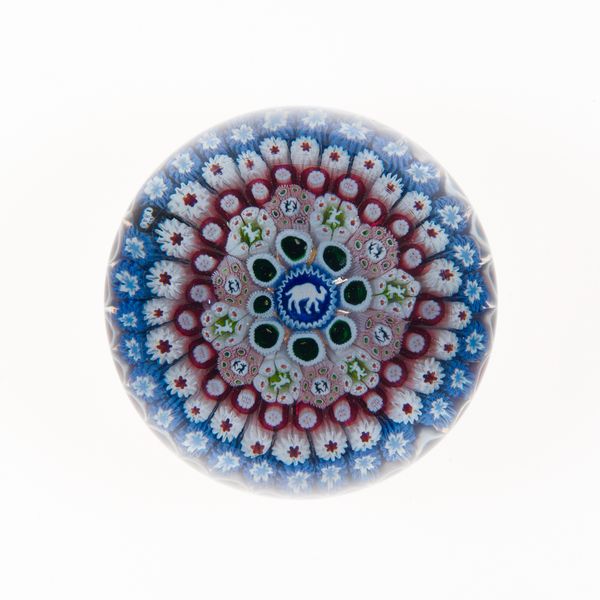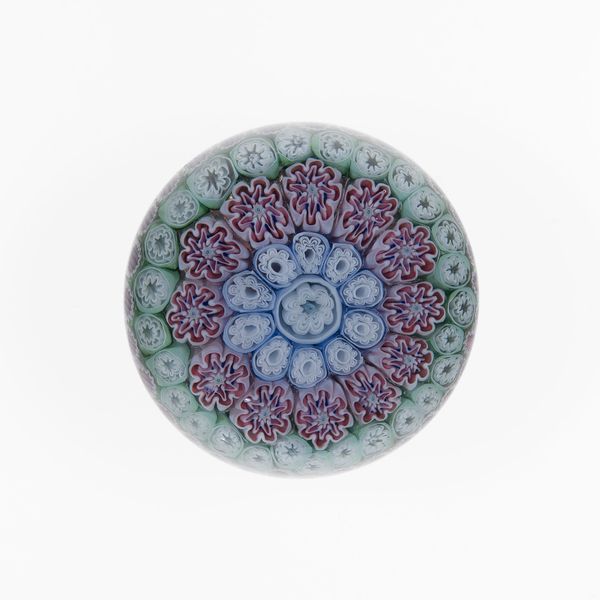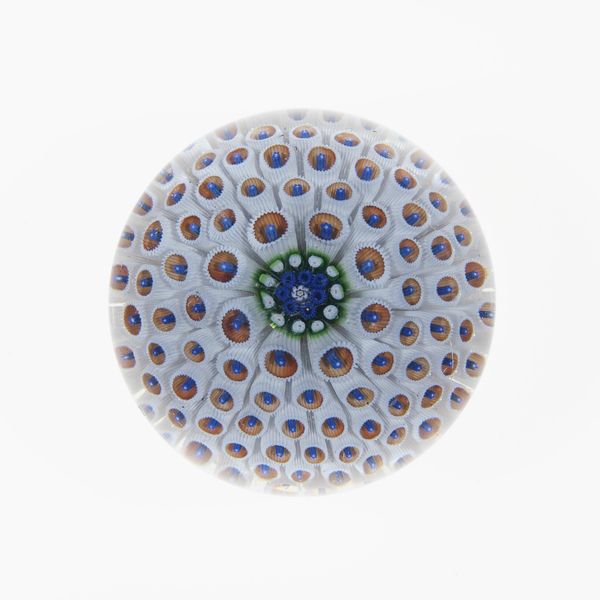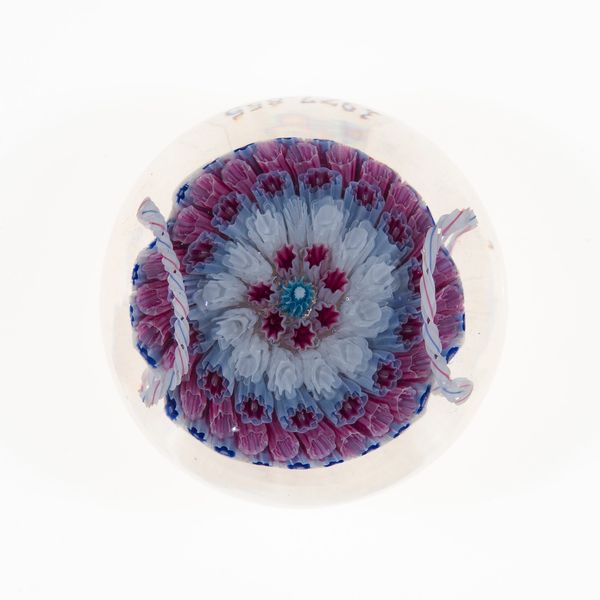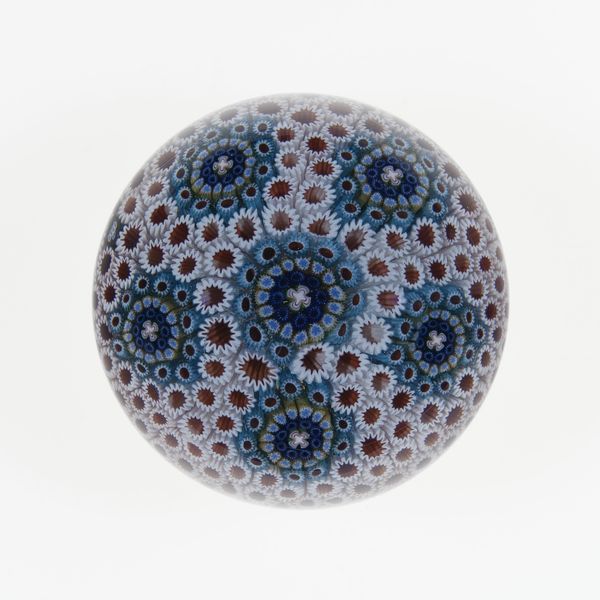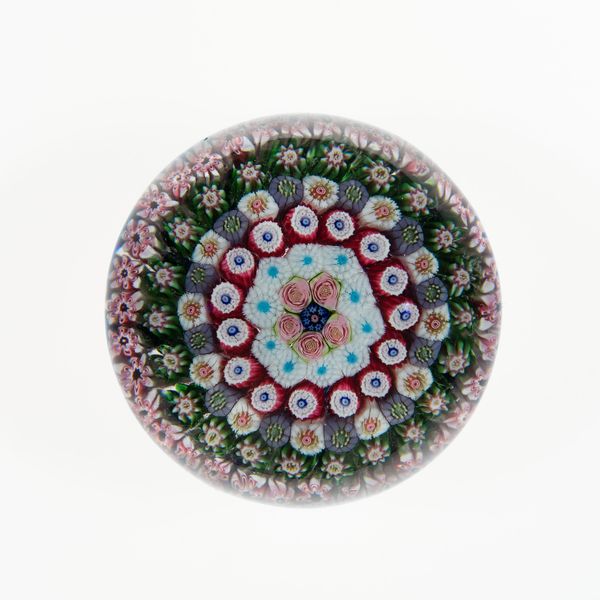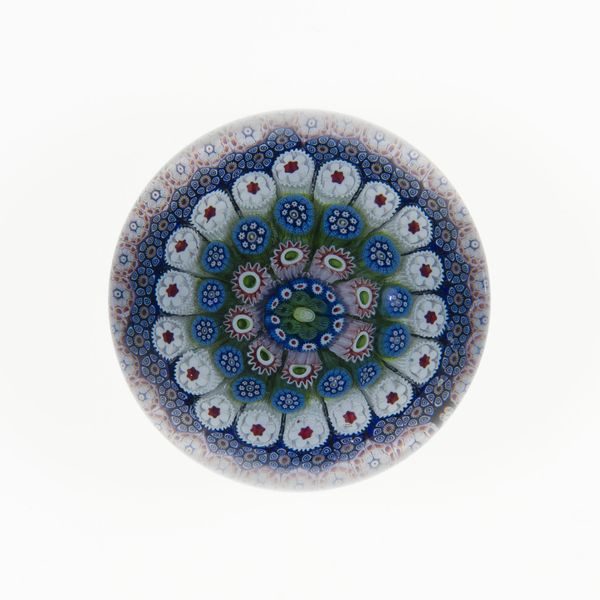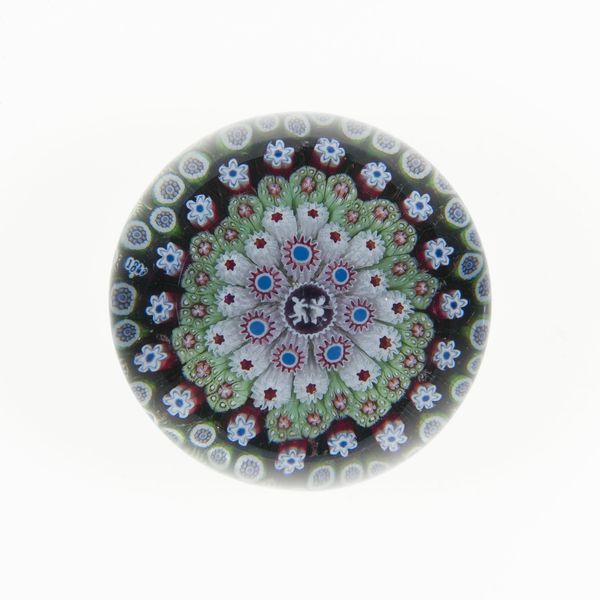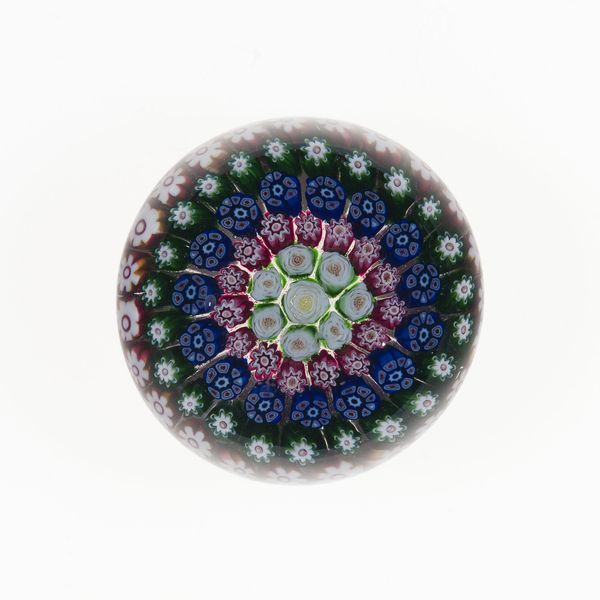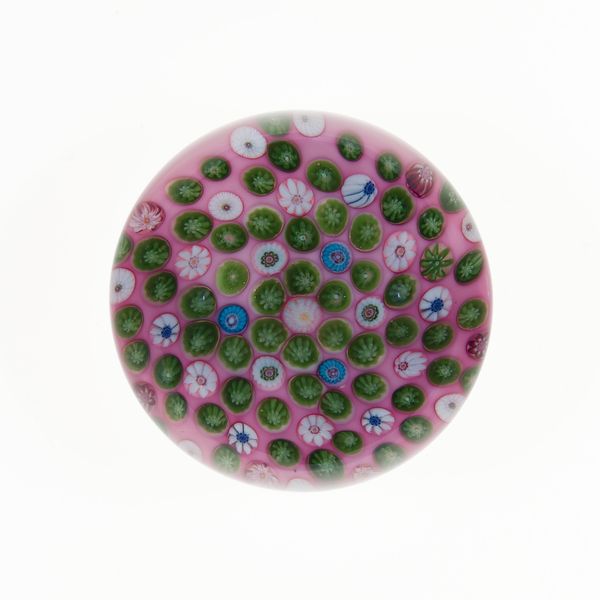
glass
#
glass
#
organic pattern
#
decorative-art
Dimensions: Diam. 7.9 cm (3 1/8 in.)
Copyright: Public Domain
Curator: Welcome. We're looking at "Paperweight", crafted by George Bacchus & Sons sometime between 1848 and 1855. It's currently held here at The Art Institute of Chicago. The primary materials are glass and paper. Editor: Ah, it's got that Victorian trinket vibe. I can imagine it on some stately desk holding down correspondence in a drafty manor! There’s something simultaneously mesmerizing and claustrophobic about it. Curator: That's an interesting observation. Paperweights during the Victorian era, especially those crafted with intricate designs like this one, did symbolize a certain kind of material wealth and intellectualism, an interest in the natural sciences, in botany particularly. What looks claustrophobic to you, I might say is just a densely packed symbolic cosmos! Editor: Perhaps! But isn’t there also an attempt here to constrain the organic, pressing a miniature cosmos down with glass? These shapes – stars and florals – so symmetrical, so utterly controlled. It almost fights against any free flowing, earthly sense of beauty, doesn’t it? Curator: You’ve touched on something key—the dialogue between natural forms and human ordering. The millefiori technique used here is itself a layering of symbols: each tiny floral or star is a carefully constructed module, repeated to form a wider constellation. We project onto this paperweight—its form becomes an idealized vision, tamed. Editor: Absolutely, like a memento mori pressed into crystal. There's something almost too pristine about it, which is why that twinge of confinement strikes me. Do you think Victorians sought such precise control for their personal objects as a counterpoint to industrializing society, creating ever expanding factories of stuff and relentless consumption? Curator: Precisely! Such anxieties were reflected back on small objects designed to provide moments of quiet and respite in rapidly changing times. It becomes a still life to hold in your hands, literally. It’s not so much that Victorians rejected technology, but they wished to maintain a tangible connection with nature— albeit a meticulously ordered nature. Editor: So the paperweight offers, both practically and spiritually, a stable pause amidst the flood. Very apt, perhaps it’s something of value to reclaim for ourselves. Curator: A tangible, symbolic cosmos in miniature to reconnect to. Thank you for those thoughts.
Comments
No comments
Be the first to comment and join the conversation on the ultimate creative platform.

